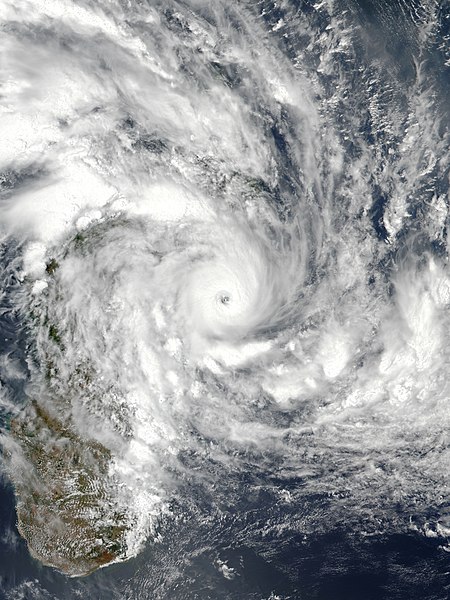Tropical Cyclone Ava was a strong tropical cyclone that brought devastating impacts to parts of eastern Madagascar in January 2018. The first tropical depression, first named storm, and first tropical cyclone of the 2017–18 South-West Indian Ocean cyclone season, Ava formed as a weak area of disturbed weather well northeast of St. Brandon on December 30. Monitored by Météo-France La Réunion (MFR), the disturbance drifted southwest, before intensifying to a moderate tropical storm on January 2. Ava drifted south afterwards with little change in strength; then among favorable conditions near the coast of Madagascar Ava rapidly intensified to tropical cyclone intensity by early on January 5 shortly before making landfall in eastern Madagascar. After landfall, Ava pummeled the region with rainfall and flooding as it weakens into a moderate tropical storm. Ava exited the landmass on January 7 and became post-tropical southeast of southern Madagascar on January 8, slowly drifting southwards as a vigorous low before dissipating a day later.

Ava near peak intensity making landfall in eastern Madagascar on January 5
Ava inland over Madagascar on January 6
Severe Tropical Storm Eliakim was a tropical cyclone that affected Madagascar and killed 21 people in 2018. The seventh tropical depression, sixth tropical storm of the 2017–18 South-West Indian Ocean cyclone season, and fourth tropical cyclone in 2018 to impact Madagascar, Eliakim was first noted as an area of atmospheric convection south-southwest of Diego Garcia on 9 March. Developmental conditions were favorable in its vicinity, and on 14 March, both the Joint Typhoon Warning Center (JTWC) and Météo-France La Réunion (MFR) began issuing warnings on the system, with MFR designating it as Tropical Disturbance 7 and the JTWC giving it the designation 14S. On the next day, MFR upgraded the system to a moderate tropical storm, assigning it the name Eliakim. Eliakim further intensified into a severe tropical storm on 15 March, with the JTWC upgrading it to a Category 1-equivalent cyclone on the Saffir–Simpson scale on 16 March. Eliakim made landfall on Masoala at 07:00 UTC, after which MFR estimated maximum 10-minute sustained winds of 110 km/h (70 mph) within the system. Eliakim weakened into a moderate tropical storm before abruptly turning southwards and re-emerging over water on 17 March. Despite unfavorable conditions, Eliakim re-intensified into a severe tropical storm on 19 March before being downgraded back into a moderate tropical storm 6 hours later. Eliakim transitioned into a post-tropical cyclone on 20 March as it moved away from Madagascar, with the MFR last tracking the system on 22 March.

Eliakim at peak intensity on 16 March
Eliakim as a post-tropical cyclone on 20 March
Comparison of two satellite images taken on 24 February and 19 March. The right image shows flooding and mud flowing out of rivers in the regions of Atsinanana and Vatovavy.





